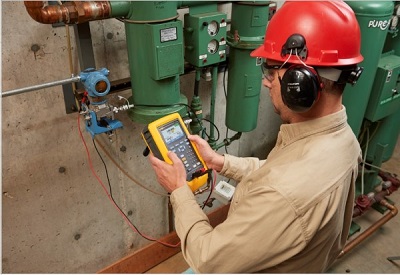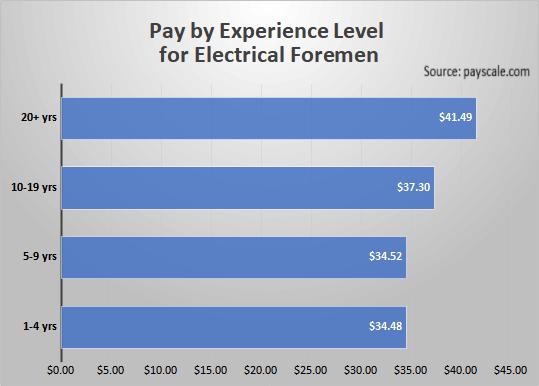Survey Results Show Need for Stronger Culture of Safety

June 1, 2020
By Sean Silvey
Setting goals around positive metrics can be more motivational than tracking injuries or negative metrics.
There is an opportunity for companies to improve and expand their safety programs, according to a survey Fluke conducted of 162 electrical workers. In the report, nearly 100% of workers agreed that having a safety culture at work was important in keeping them safe. Yet, only half of those same electrical workers perceive companies focus enough on safety.
It’s one thing to say that having a culture of safety is important. It’s another to build and sustain it. The overarching pillar in the company culture is hard to influence and takes years to see improvement within that culture of safety.
Instead, Chuck Pettinger, Ph.D. a safety expert at Predictive Solutions, recommends companies start by creating what he calls a “positive climate of safety.” Over time, this leads to a culture of safety as the work toward a climate of safety is done daily. When a strong safety climate is part of workers’ daily lives, the culture continues to develop and improve.
“If we influence the climate in a positive or negative way,” says Dr. Pettinger, “over time it can impact the culture itself, the overarching organizational culture. If you really want to change the culture, it’s going to take three to five years.”
How to develop a climate of safety
Communication is key to creating a strong climate of safety, Dr. Pettinger believes. The way safety is talked about — from the top down — makes all the difference. There are three main aspects of communication to implement or change before seeing a positive impact on your safety climate.
1. Metrics
Injury tracking is a common barometer most companies use for evaluating the success of their safety campaigns. But tracking injury rate or days since the last incident can erode any other actions toward creating a climate of safety. “If you have any injury tracking mechanisms (e.g., stop lights) in your companies, I would rip them out,” says Dr. Pettinger. “Usually safety performance is based on injury rate and that drives a lot of safety reporting underground. It may hurt the culture.”
Instead of influencing workers to take the time to be safe, injury trackers pressure workers to avoid reporting incidents. It drives any work toward a climate of safety underground and creates a culture of blame and shame; should someone break the streak of days since an accident occurred, they are blamed for ruining the progress.
Dr. Pettinger recommends focusing on tracking positive metrics. Short-term, attainable goals are best, such as S.M.A.R.T. goals:
• Specific
• Motivational
• Achievable
• Recordable
• Trackable
Setting these kinds of goals helps motivate employees to be part of the climate of safety and helps move toward a safer workplace. Moving the dial on a culture of safety is a long-term process, so setting smaller, more achievable goals helps workers make a difference toward the more influenceable climate of safety.
One example of a S.M.A.R.T. goal Dr. Pettinger gave is focusing on tracking the quality of the safety inspections, or how many employees participate in a safety meeting. He’s seen that people are often more motivated when trying to improve something, rather than avoiding or reducing something, like injuries.
2. Incentives
Along with creating these goals, building incentives around them can help keep workers actively thinking about safety. Incentives can be a powerful way to influence behaviour; however, they must be the right types of incentives. Does your company have any incentives in place? What message are those incentives sending about safety? If they are focused on reducing injuries, then the message many employees get is, “Don’t report them.”
Dr. Pettinger suggests planned, spontaneous recognition. Small rewards for reaching pre-determined, positive goals. For example, doughnuts for recognizing and correcting 1,000 safety issues. Choose an incentive that will boost morale and celebrate good work done toward creating an improved climate of safety.
3. Training
An important aspect of safety in the workplace is centred around effective training. However, less than 30% of workers believe companies provide adequate safety training. Whether companies have outdated, inadequate, or a complete lack of safety training, one thing is definite: there is an opportunity to ensure workers are getting the best training possible, so they go home safe every day.
Dr. Pettinger has seen success in personalizing safety training to the student and adapting the style of teaching to the class. He recommends reviewing any existing training programs your company has to make sure it is the right type of education and training for the jobs your workers are doing.
 Develop a strong culture of safety over time by tracking the right metrics, setting the right incentives and training employees carefully.
Develop a strong culture of safety over time by tracking the right metrics, setting the right incentives and training employees carefully.
Closing the gap
Fluke’s survey showed an opportunity to close the gap between needing and having a strong culture of safety at work. By changing how managers and employees communicate and think about safety, companies can close that gap. The right metrics, incentives and training programs help to build a strong climate of safety which, over time, turns into a long-term culture of safety within the company.
Sean Silvey is a product and application specialist for Fluke, which manufactures electrical test and measurement tools, including multimeters, clamp meters and insulation, earth ground and installation testers.
















